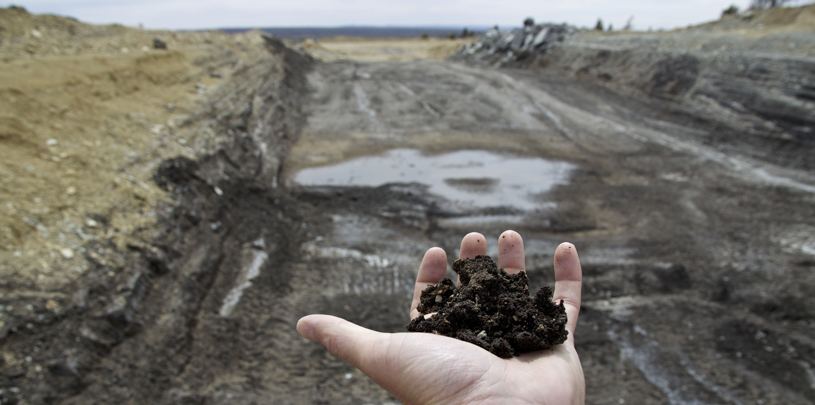
 by Megan Kelly, Energy Associate
by Megan Kelly, Energy Associate
On December 11, 2020, as the Grand Canyon Trust and our partners were gearing up to oppose the latest step in a federal government plan to lease public lands in northern Utah for tar sands mining, the feds pulled the plug on the permitting process for the project, known as “Asphalt Ridge.”
What would have been a 2,100-acre tar sands lease in the Uinta Basin near Vernal, Utah is now paused indefinitely. The move came following revelations by our partners at the Southern Utah Wilderness Alliance (SUWA), that a conflict of interest may be in play with regard to who applied for the tar sands lease. And while we are celebrating a small win, a certain federal contract employee will likely be getting a lump of coal (certainly not bitumen) in his stocking.
Tar sands are a sludgy mixture of sand, clay, water, and bitumen — a sticky black petroleum-based substance. Bitumen is often used in asphalt mixtures for roads, and can be refined into products like synthetic oil and gasoline.
There are two methods to extract bitumen from tar sands; both come at a heavy cost to the environment, water, and surrounding communities.
The first method is strip-mining. Strip-mining tar sands requires clear-cutting vegetation and stripping away topsoil. Then, the tar sands deposits are dug up, dumped into trucks, and hauled to a plant to extract the bitumen. The copious amounts of water used during the extraction process become polluted with toxic substances such as lead, mercury, and arsenic, and end up sitting in huge storage ponds, threatening to contaminate surrounding water sources by seeping into groundwater, and endangering wildlife that confuse these toxic pools for rare drinking-water sources in the arid West.
Another method is to mine tar sands where they are, called “in-situ” mining. During in-situ mining, wells are drilled into tar sands deposits beneath the Earth’s crust. Steam is used to liquefy the bitumen underground, and once liquified, it flows back through the well to the surface. Wastewater from this process is stored in the well, which threatens to contaminate groundwater by seeping into deeper aquifers if a leak in the well were to occur.
Tar sands are incredibly dirty — and not just because of the mining process. Every gallon of gasoline made from tar sands produces 15 percent more carbon dioxide emissions than one gallon made from conventional oil. To make matters worse, every gallon of gasoline produced from tar sands requires three times as much water (5.9 gallons) than is used when producing gasoline from conventional oil. In the dry, rural West, where climate change is already contributing to drought, allowing tar sands projects to spew out carbon emissions and suck up water is a terrible idea.
Like us, you may be thinking that pausing a fossil fuel project seems highly unlikely in the final days of the current administration. But the Bureau of Land Management (BLM) — the federal agency that manages the land where the Asphalt Ridge tar sands project would be located — has a new Utah state director, and he finally took action.
For years, the environmental community’s concerns about conflicts of interest in mineral leasing in the region have been swept under the rug. After years of flagging this same issue, SUWA once again reported that the company behind the Asphalt Ridge proposal is owned by a BLM contract employee. This conflict of interest is both unethical and likely illegal since that contract employee works in the office that oversees mineral leases.
The Biden administration has promised to ban new oil and gas permitting on public lands. So as long as Biden follows through, the Asphalt Ridge tar sands proposal will be dead, at least as long as the expected ban is in place.
This is great news for Utah’s public lands, clean water, and air quality as we head into the holiday season. If you want to be sure to follow our work on more projects like this, please sign up for our action alerts.
Estonian-owned oil shale giant is barred from siphoning 100 billion gallons of water from a Colorado River tributary.
Read MoreThere's something fishy about the water right for a massive oil shale facility in northern Utah.
Read MoreCould a wild corner of Utah become the site of the nation's first commercial-scale oil shale strip mine and processing plant?
Read More